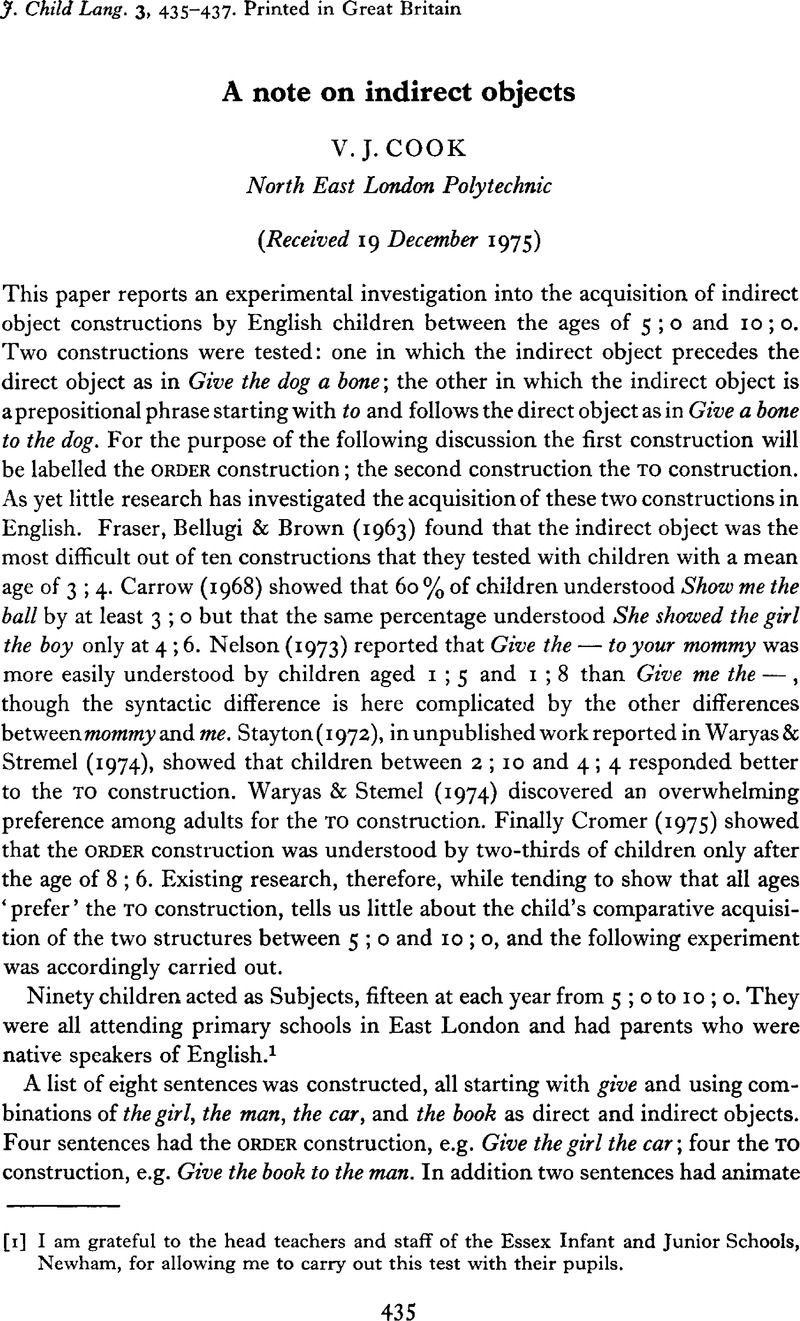Crossref Citations
This article has been cited by the following publications. This list is generated based on data provided by Crossref.
Lightbown, Patsy M.
1977.
FRENCH L2 LEARNERS: WHAT THEY'RE TALKING ABOUT1.
Language Learning,
Vol. 27,
Issue. 2,
p.
371.
Scholes, Robert J.
and
Klepper, Brian R.
1982.
The Comprehension of Double-Object Constructions in Psycholinguistics and Neurolinguistics.
Language and Speech,
Vol. 25,
Issue. 1,
p.
55.
White, Lydia
1987.
Markedness and Second Language Acquisition.
Studies in Second Language Acquisition,
Vol. 9,
Issue. 3,
p.
261.
Weissenborn, Jurgen
Kail, Michèle
and
Friederici, Angela
1990.
Language-particular or language-independent factors in acquisition? Children's comprehension of object pronouns in Dutch, French and German.
First Language,
Vol. 10,
Issue. 29,
p.
141.
Drenhaus, Heiner
and
Féry, Caroline
2008.
Animacy and child grammar: An OT account.
Lingua,
Vol. 118,
Issue. 2,
p.
222.
Su, Yi-ching
2010.
Knowledge of structural constraints on the dative alternation in children's pronoun interpretation.
Lingua,
Vol. 120,
Issue. 1,
p.
1.
Woods, Rebecca
2015.
The acquisition of dative alternation by German-English bilingual and English monolingual children.
Linguistic Approaches to Bilingualism,
Vol. 5,
Issue. 2,
p.
252.
Buckle, Leone
Lieven, Elena
and
Theakston, Anna L.
2017.
The Effects of Animacy and Syntax on Priming: A Developmental Study.
Frontiers in Psychology,
Vol. 8,
Issue. ,
Arunachalam, Sudha
2017.
Preschoolers' Acquisition of Novel Verbs in the Double Object Dative.
Cognitive Science,
Vol. 41,
Issue. S4,
p.
831.
Qiu, Weizhe
and
He, Xiaowei
2025.
Comprehension of Ditransitive Constructions in Mandarin-Speaking Children with Developmental Language Disorder and Children with Autism Spectrum Disorder Plus Language Impairment.
Journal of Autism and Developmental Disorders,
Vol. 55,
Issue. 4,
p.
1450.



